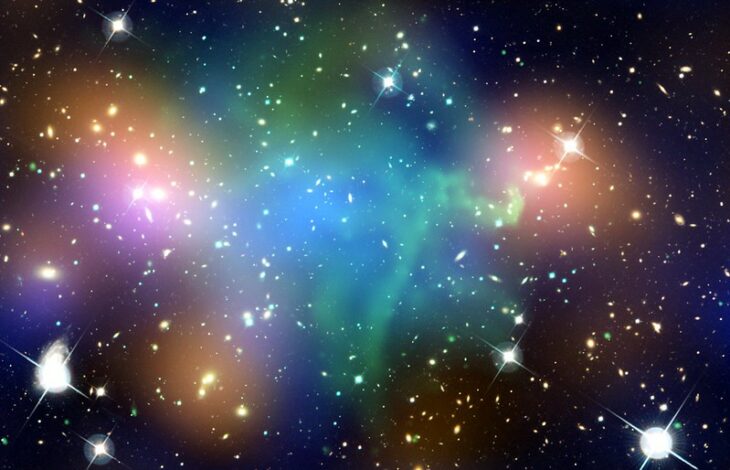Of the 4 fundamental forces in the universe, gravity is the one that typically comes to mind when you think about space. This makes intuitive sense because it’s strongest between heavy objects and works over enormous distances, and things are big and far apart when it comes to the cosmos. But another fundamental force, called electromagnetism, also plays a part in space science.
First and foremost, all light, whether it be radio waves, the color blue, or X-rays, is made up of oscillating electric and magnetic fields, making it electromagnetic radiation. Objects in space that we’re familiar with, like the Earth and Sun, are surrounded by magnetic fields. Earth’s magnetic field shields us from harmful radiation, while the Sun’s magnetic field expels it. All that is required to generate a magnetic field is charged particles, such as protons or electrons, moving around. So, many objects at different scales have magnetic fields, including entire galaxies!
Scientists know that galaxies have magnetic fields, but it’s unclear how different galaxies get different strength magnetic fields or how those magnetic fields affect their development over time. These inquiries are complicated by the fact that galaxies often aren’t alone. Some, like the Milky Way, have smaller galaxies orbiting them, called satellites. These galaxies pull on each other with gravity and interfere with each other’s magnetic fields.
A team of researchers investigated how different environments for small galaxies impacted the strength of their magnetic fields. They did this by modeling how the material inside galaxies would move if they treated it like a fluid with charged particles. They performed 2 sets of simulations, 1 of which also included the behavior of fast-moving, high-energy particles called cosmic rays.
They simulated magnetic fields produced in 13 different scenarios, ranging from isolated galaxies about 10 billion times the Sun’s mass to gargantuan galaxies 10 trillion times the Sun’s mass surrounded by up to 33 satellites. The team started each simulation with galaxies having magnetic field strengths of 10-14 Gauss (G). For reference, the Earth has a magnetic field strength of 0.3 to 0.6 G. They ran each scenario for 12 billion simulated years, letting the galaxies interact, move around, and form stars, then tracked how strong the magnetic fields became in the small galaxies.
All of the simulated galaxies’ magnetic fields grew stronger over time as they formed stars. Star formation stirs up material in a galaxy, increasing its magnetic field strength and producing cosmic rays. Most of the galaxies ended up with magnetic fields between 10-7 and 10-6 G, with larger galaxies tending towards stronger fields. However, they found that when a small galaxy passed by a larger companion, its magnetic field was stronger than that of a comparable isolated small galaxy.
They tracked the satellite galaxies through the timeline of the simulation, and found that these galaxies saw, on average, a 2- to 8-fold increase in their magnetic field strength as they reached the part of their orbit closest to their host. In one extreme case, a satellite’s magnetic field grew 15 times stronger after nearing its host. Satellite galaxies that were distant from their hosts or hadn’t yet made their closest approach didn’t have such a pronounced increase in their magnetic field strength.
The team interpreted their results to suggest that the more turbulent the material between stars in a galaxy is, the stronger the galaxy’s magnetic field will become. This material is called the interstellar medium or ISM. In this case, orbiting close to its host shakes up a satellite galaxy’s ISM, causing it to become more magnetic than a small isolated galaxy. Coming close to a big galaxy also compresses a satellite galaxy due to the strong gravity and exposes it to outflowing magnetized material. Both of these interactions would increase the satellite’s magnetic field strength.
The team recommended that future researchers use their results to guide radio and gamma-ray observations of galaxies, as these 2 regions of the electromagnetic radiation spectrum can tell astronomers about the magnetic field properties of objects. They also cautioned that astronomers who simulate isolated galaxies may get biased results, as such conditions do not reflect the real universe, where many galaxies have companions.


